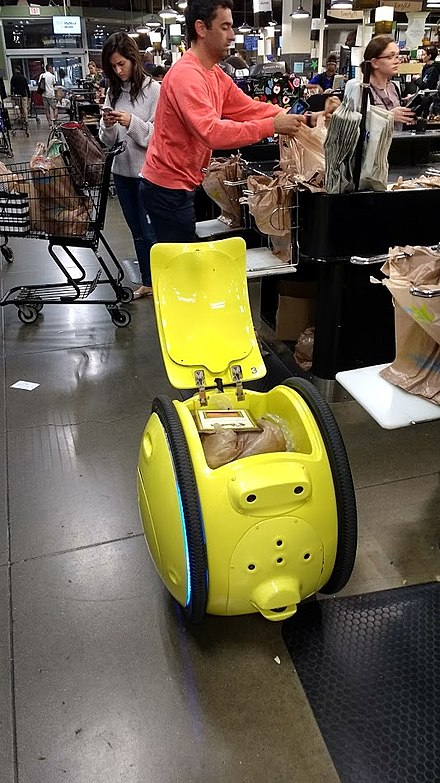I’m an overall tech person, with a longtime interest in robotics. So I find the growing number of new robotics applications – medical, manufacturing, assistive, even some of those built for a less illustrious purpose – to be an exciting development. And then, occasionally, one will come along that I find to b e a head-scratcher. Into this category, I’ll have to place the “gita”, a robot that doesn’t do much other than follow you around and carry 40 pounds of groceries.
e a head-scratcher. Into this category, I’ll have to place the “gita”, a robot that doesn’t do much other than follow you around and carry 40 pounds of groceries.
The brainchild of Piaggio Fast Forward – a subsidiary of Piaggio, which gave the world the amazingly practical Vespa motor scooter, the gita was first introduced in mid-2017. As originally conceived, the gita would be able to create maps of frequented terrain so that it could operate autonomously. For the market launch (availability: November 18, 2019), that functionality has been pared down. There is no autonomous mode, so you can’t send the gita off to the store to pick up your groceries. It can only follow you around.
Also pared down was the m.p.h., which went from 22 m.p.h. to 6 m.p.h., which sounds to me like a good thing. The gita weighs 50 pounds, and you wouldn’t want to run into that while it was speeding along at 22 m.p.h. Some of the core technology changed from the original announcement as well, with lidar replaced by computer vision technology that identifies the robot’s owner and “locks onto their body shape.”
The gita has a 4-hour battery life, and recharges, using a regular home outlet, in 2 hours. So that’s all good.
But I just don’t get it.
It can carry 40 pounds worth of groceries, which seems like a good thing if you have trouble carrying things. But it can’t climb stairs, which means when you get those groceries home, and you’ve got any stairs to climb, you’re toting those grocery bags up yourself. And then you have to haul the 50-pound vehicle up. Same problem if you want to get it in and out of your car. How an elderly person lift it? So much for assistive technology.
And there were other design choices that seem to me to come down more on the “cool” side than the practical.
The robot’s creators worked with the Berklee College of Music in Boston to compose a library of distinct sounds — which adjust dynamically according to the volume of ambient noise surrounding the robot — to indicate gita’s battery level or when the robot is ready to pair with its owner. (Source: Washington Post)
While I don’t see this product as being particularly useful, Piaggio Fast Forward has other ideas.
Jeffrey Schnapp, Piaggio Fast Forward co-founder and chief visionary officer, said moving around the world with your hands object-free means a pedestrian can more fully interact with their environment, whether that means being more curious or socializing without distraction.
“We see gita as support for someone’s daily life and an extension of yourself, but we also see it serving as a type of connective tissue among friends,” Schnapp said.
First, the robot’s creators admit, they’ll have to familiarize the public with the idea of a robot that acts as an extension of its owner. When people are shown photos of the robot, Lynn said, some assume the machine is designed to “deliver a burrito to your front door.”
If they’re able to build awareness, the company hopes gita’s appeal will move beyond tech bros and urban millennials looking for an expensive picnic toy. Schnapp said he believes the robot could also appeal to older people or individuals with disabilities, for example, who might benefit from having a machine to help carry groceries and run errands with added support.
“Connective tissue…extension of its owner…” Me? I just don’t see it. $3,250 for something that reminds me of the far cheaper “smart suitcases” built to follow their owners around the airport. (Come to think of it, you don’t see these in real life, either.)
What I find interesting is this statement of one of Piaggio Fast Forward’s core values:
We believe design comes first.
As an engineer, I’m a big believer that what comes first is solving a problem. Don’t get me wrong. Design is important, but for $3,250, you better be delivering something more than a product that looks nifty but doesn’t do all that much.
